#Black Friars
Text
If Neverwhere by neil gaiman has a million fans, im one of them. If it has 100,000 fans im one of them. If it has a hundred fans, im one of them, if it has 50, im there too. If it has 1 fan, that is me. If it has zero fans, then im truly dead and gone.
#Neverwhere#Neil gaiman#Door#Richard mayhew#richard mayhew#Hunter#Black friars#London#Author's preferred text#I love it sm
821 notes
·
View notes
Text
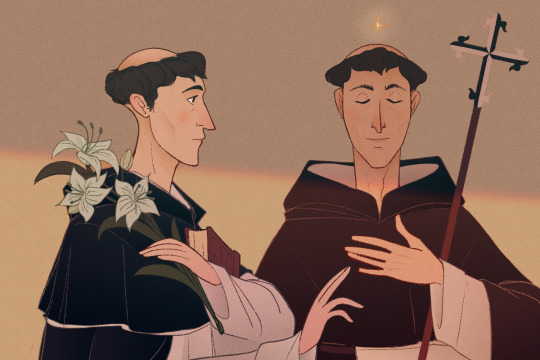
He was always joyous and cheerful, except when moved to compassion at anyone’s sorrows
This is completely out of the blue but I figured it'd be a peaceful process making this. I'm practicing on his looks.
#St. Dominic de Guzman#Catholicism#Black Friars#Christianity#my art#Friar#Saints#Monk#I always wanted to draw religious figures#I'm Catholic and St. Dominic was a big influence in our school#Order of Preachers#catholic art
172 notes
·
View notes
Text
The fact that the saga of Black Friars does not have an english translation is unbelievable to me. It's an amazing serie, with dark, gothic atmosphere that mixes fantasy, romance and mistery. The style of the author is amazing, the chracters are incredibly vivid and go from exceedingly funny to fascinating and dark. There are vampires, spirits, demon-like supernatural creatures, humans capable to harness the power of gods and much more.
This saga would do numbers if only more people were aware it existed
#this in: i picked up this saga on a whim after 10 years#and it is as amazing as i remember it#Black friars#black friars: l'ordine della spada
0 notes
Text

A friar in a garden (with a hint of elvish ears)
Arts and Crafts stained glass at The BlackFriar pub, London
#found#art#london#stained glass window#stained glass#arts and crafts#20th century#london pubs#black friars#grade 2 listed building#monk
0 notes
Text
STAINED GLASS WINDOWS AT BLACK ABBEY CHURCH IN KILKENNY
The images did not turn out as well as I had hoped as the light passing through the stained glass was overpowering.

View On WordPress
#Abbey Street#Black Friars#Canon. 5D MkIII#Fotonique#Infomatique#Ireland#Kilkenny Dominican church#Lord of Leinster#Order of Preachers#Photographs Of The Interior#religion#St. Dominic#William Marshall#William Murphy
0 notes
Text
Moonwater is honestly funnier when they aren't friends because, on one side, you have a teenager with the body of an 80-year-old man with shit hips who breaks his bones once a month and has the most grandpa taste ever, beefing with his boyfriend's younger brother who was definitely a child from late 1800s that died from tuberculosis in his past life and now carries the pale body and shitty immune system in his new one with the power of Shakespeare and the restless spirits of Tybalt (Regulus) and Romeo (Remus).
#sirius is juliet if she was in her angsty teenage phase#sirius-juliet is the reason why friar lawrence was going thru it#marauders era#regulus black#remus lupin#moonwater friendship#platonic moonwater#remus and regulus
97 notes
·
View notes
Text

Title/Name: Martin Luther, (1483–1546).
Bio: German priest, theologian, author, hymn writer, professor, and Augustinian friar.
Country: Germany
Wojak Series: Grug (Variant)
Image by: Unknown
Main Tag: Martin Luther Wojak
#Wojak#Martin Luther Wojak#Luther Wojak#German#priest#theologian#author#Writer Author#Writer#hymn writer#professor#Augustinian friar#Augustinian#Friar#Theology#Martin Luther#Grug Series#White#Brown#Black
11 notes
·
View notes
Text

The Friars (Aylesford Priory), Aylesford, Kent, England, September 2023.
#photography#nature photography#nature#wildlife#wildlife photography#animals#animal photography#birds#swan#black swan#water#pond#kent#england#aylesford#the friars#aylesford priory#lensblr#photographers on tumblr#original photography
6 notes
·
View notes
Text
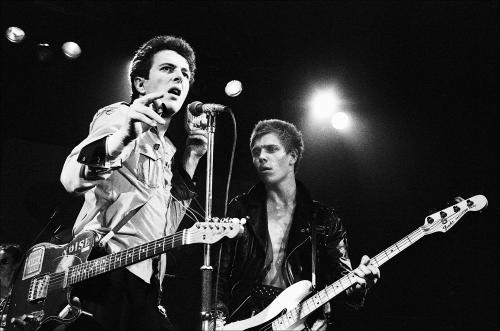
The Clash on stage at Friars , Aylesbury , UK , 28th June , 1978 .
©️ Mark Jordan
#joe strummer#paul simonon#the clash#punk boy#punk aesthetic#70s punk#80s punk#uk punk#punk rock#new wave#post punk#experimental rock#reggae#dub#funk#ska#rockabilly#the only band that matters#black and white photography#friars#aylesbury#uk#mark jordan#1978
10 notes
·
View notes
Text
anyway found this neat relief just hanging out on the side of a sainsburys in london when me and mum were playing geoguessr yesterday
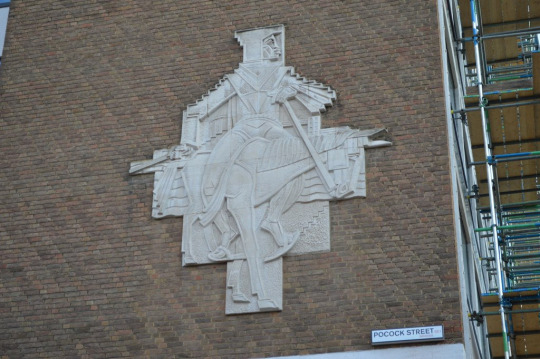
#*deep space noises*#i like the shapes#i cant find much abt it tho#storywise or anything#it just is what it is#a black friar near blackfriars#which i suppose is all it needs to be rly
1 note
·
View note
Text
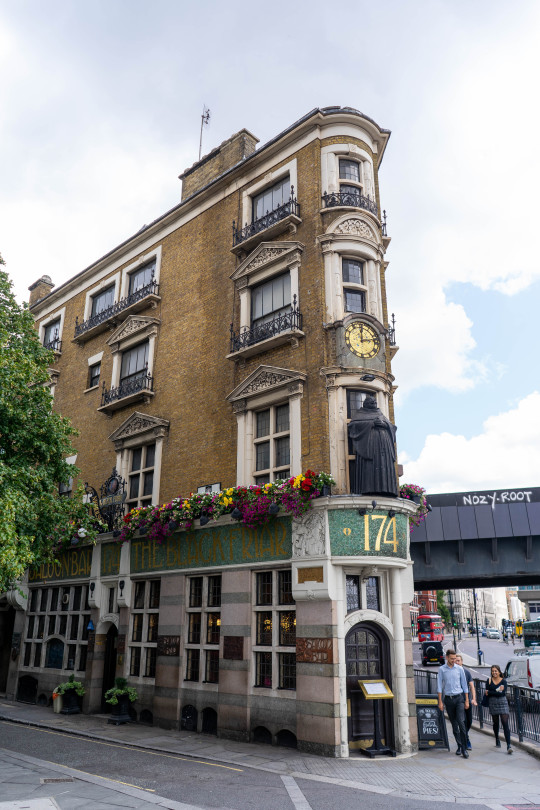
The Black Friar pub in London. The outside was used in Men in Black International.
0 notes
Photo

The Dominicans or Black Friars
The thirteenth century saw the romantic rise, the marvellous growth, and then the inevitable decay of the Friars, the two orders whose careers form one of the most fascinating and impressive stories in modern history. The Franciscans, or Grey Friars, founded in 1212, the Dominicans, or Black Friars, founded in 1216, by the middle of the century had infused new life throughout the Catholic world. By the end of the century their power was spent, and they had begun to be absorbed in the general life of the Church. It was one of the great rallies of the Papal Church, perhaps of all the rallies the most important, certainly the most brilliant, most pathetic, most fascinating, the most rich in poetry, in art, in devotion. For the mediaeval Church of Rome, like the Empire of the Caesars at Rome, like the Eastern Empire of Constantinople, like the Empire of the Khalifs, which succeeded that, seems to subsist for centuries after its epoch of zenith by a long series of rallies, revivals, and new births out of almost hopeless disorganisation and decay sofia city tour.
But the thirteenth century is not less memorable for its political than for its spiritual history. And in this field the history is that of new organisations, not the dissolution of the old. The thirteenth century gave Europe the nations as we now know them. France, England, Spain, large parts of North and South Germany, became nations, where they were previously counties, duchies, and fiefs. Compare the’ map of Europe at the end of the twelfth century, when Philip Augustus was struggling with Richard 1., when the King of England was a more powerful ruler in France than the so-called King of France in Paris, when Spain was held by various groups of petty kinglets facing the solid power of the Moors, compare this with the map of Europe at the end of the thirteenth century, with Spain constituted a kingdom under Ferdinand in. and Alfonso x., France under Philip the Fair, and England under Edward I.
At the very opening of the thirteenth century John did England the inestimable service of losing her French possessions. At the close of the century the greatest of the Plantagenets finally annexed Wales to England and began the incorporation of Scotland and Ireland. Of the creators of England as a sovereign power in the world, from Alfred to Chatham, between the names of the Conqueror and Cromwell, assuredly that of Edward I. is the most important. As to France, the petty counties which Philip Augustus inherited in 1180 had become, in the days of Philip the Pair (1286-1314), the most powerful nation in Europe. As a great European force, the French nation dates from the age of Philip Augustus, Blanche of Castile, her son Louis ix. (the Saint), and the two Philips (ill. and iv.), the son and grandson of St. Louis. The monarchy of France was indeed created in the thirteenth century. All that went before was preparation: all that came afterwards was development. Almost as much may be said for England and for Spain.
Hundred years of European history
It was an age of great rulers. Indeed, we may doubt if any hundred years of European history has been so crowded with great statesmen and kings. In England, Stephen Langton and the authors of our Great Charter in 1215; William, Earl Mareschal, Simon de Montfort, Earl of Leicester, and above all Edward 1:, great as soldier, as ruler, as legislator — as great when he yielded as when he compelled. In France, Philip Augustus, a king curiously like our Edward 1. in his virtues as in his faults, though earlier by three generations; Blanche, his son’s wife, Regent of France; St. Louis, her son; and St. Louis’ grandson, the terrible, fierce, subtle, and adroit Philip the Fair.
Then on the throne of the Empire, from 1220 to 1250, Frederick II., ‘the world’s wonder,’ one of the most brilliant characters of the Middle Ages, whose life is a long romance, whose many-sided endowments seemed to promise everything but real greatness and abiding results. Next, after a generation, his successor, less brilliant but far more truly great, Rudolph of Hapsburg, emperor from 1273 to 1291, the founder of the Austrian dynasty, the ancestor of its sovereigns, the parallel, I had almost said the equal, of our own Edward 1. In Spain, Ferdinand 111. and his son, Alfonso x., whose reigns united gave Spain peace and prosperity for fifty-four years (1230-1284).
0 notes
Photo

The Dominicans or Black Friars
The thirteenth century saw the romantic rise, the marvellous growth, and then the inevitable decay of the Friars, the two orders whose careers form one of the most fascinating and impressive stories in modern history. The Franciscans, or Grey Friars, founded in 1212, the Dominicans, or Black Friars, founded in 1216, by the middle of the century had infused new life throughout the Catholic world. By the end of the century their power was spent, and they had begun to be absorbed in the general life of the Church. It was one of the great rallies of the Papal Church, perhaps of all the rallies the most important, certainly the most brilliant, most pathetic, most fascinating, the most rich in poetry, in art, in devotion. For the mediaeval Church of Rome, like the Empire of the Caesars at Rome, like the Eastern Empire of Constantinople, like the Empire of the Khalifs, which succeeded that, seems to subsist for centuries after its epoch of zenith by a long series of rallies, revivals, and new births out of almost hopeless disorganisation and decay sofia city tour.
But the thirteenth century is not less memorable for its political than for its spiritual history. And in this field the history is that of new organisations, not the dissolution of the old. The thirteenth century gave Europe the nations as we now know them. France, England, Spain, large parts of North and South Germany, became nations, where they were previously counties, duchies, and fiefs. Compare the’ map of Europe at the end of the twelfth century, when Philip Augustus was struggling with Richard 1., when the King of England was a more powerful ruler in France than the so-called King of France in Paris, when Spain was held by various groups of petty kinglets facing the solid power of the Moors, compare this with the map of Europe at the end of the thirteenth century, with Spain constituted a kingdom under Ferdinand in. and Alfonso x., France under Philip the Fair, and England under Edward I.
At the very opening of the thirteenth century John did England the inestimable service of losing her French possessions. At the close of the century the greatest of the Plantagenets finally annexed Wales to England and began the incorporation of Scotland and Ireland. Of the creators of England as a sovereign power in the world, from Alfred to Chatham, between the names of the Conqueror and Cromwell, assuredly that of Edward I. is the most important. As to France, the petty counties which Philip Augustus inherited in 1180 had become, in the days of Philip the Pair (1286-1314), the most powerful nation in Europe. As a great European force, the French nation dates from the age of Philip Augustus, Blanche of Castile, her son Louis ix. (the Saint), and the two Philips (ill. and iv.), the son and grandson of St. Louis. The monarchy of France was indeed created in the thirteenth century. All that went before was preparation: all that came afterwards was development. Almost as much may be said for England and for Spain.
Hundred years of European history
It was an age of great rulers. Indeed, we may doubt if any hundred years of European history has been so crowded with great statesmen and kings. In England, Stephen Langton and the authors of our Great Charter in 1215; William, Earl Mareschal, Simon de Montfort, Earl of Leicester, and above all Edward 1:, great as soldier, as ruler, as legislator — as great when he yielded as when he compelled. In France, Philip Augustus, a king curiously like our Edward 1. in his virtues as in his faults, though earlier by three generations; Blanche, his son’s wife, Regent of France; St. Louis, her son; and St. Louis’ grandson, the terrible, fierce, subtle, and adroit Philip the Fair.
Then on the throne of the Empire, from 1220 to 1250, Frederick II., ‘the world’s wonder,’ one of the most brilliant characters of the Middle Ages, whose life is a long romance, whose many-sided endowments seemed to promise everything but real greatness and abiding results. Next, after a generation, his successor, less brilliant but far more truly great, Rudolph of Hapsburg, emperor from 1273 to 1291, the founder of the Austrian dynasty, the ancestor of its sovereigns, the parallel, I had almost said the equal, of our own Edward 1. In Spain, Ferdinand 111. and his son, Alfonso x., whose reigns united gave Spain peace and prosperity for fifty-four years (1230-1284).
0 notes
Photo
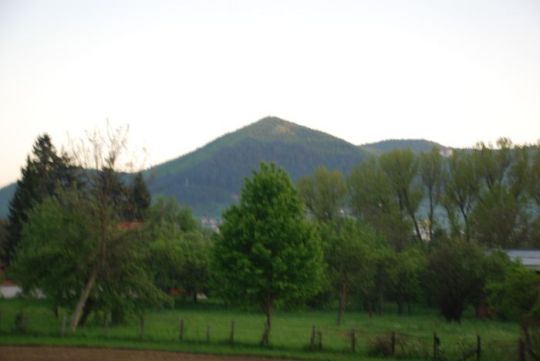
The Dominicans or Black Friars
The thirteenth century saw the romantic rise, the marvellous growth, and then the inevitable decay of the Friars, the two orders whose careers form one of the most fascinating and impressive stories in modern history. The Franciscans, or Grey Friars, founded in 1212, the Dominicans, or Black Friars, founded in 1216, by the middle of the century had infused new life throughout the Catholic world. By the end of the century their power was spent, and they had begun to be absorbed in the general life of the Church. It was one of the great rallies of the Papal Church, perhaps of all the rallies the most important, certainly the most brilliant, most pathetic, most fascinating, the most rich in poetry, in art, in devotion. For the mediaeval Church of Rome, like the Empire of the Caesars at Rome, like the Eastern Empire of Constantinople, like the Empire of the Khalifs, which succeeded that, seems to subsist for centuries after its epoch of zenith by a long series of rallies, revivals, and new births out of almost hopeless disorganisation and decay sofia city tour.
But the thirteenth century is not less memorable for its political than for its spiritual history. And in this field the history is that of new organisations, not the dissolution of the old. The thirteenth century gave Europe the nations as we now know them. France, England, Spain, large parts of North and South Germany, became nations, where they were previously counties, duchies, and fiefs. Compare the’ map of Europe at the end of the twelfth century, when Philip Augustus was struggling with Richard 1., when the King of England was a more powerful ruler in France than the so-called King of France in Paris, when Spain was held by various groups of petty kinglets facing the solid power of the Moors, compare this with the map of Europe at the end of the thirteenth century, with Spain constituted a kingdom under Ferdinand in. and Alfonso x., France under Philip the Fair, and England under Edward I.
At the very opening of the thirteenth century John did England the inestimable service of losing her French possessions. At the close of the century the greatest of the Plantagenets finally annexed Wales to England and began the incorporation of Scotland and Ireland. Of the creators of England as a sovereign power in the world, from Alfred to Chatham, between the names of the Conqueror and Cromwell, assuredly that of Edward I. is the most important. As to France, the petty counties which Philip Augustus inherited in 1180 had become, in the days of Philip the Pair (1286-1314), the most powerful nation in Europe. As a great European force, the French nation dates from the age of Philip Augustus, Blanche of Castile, her son Louis ix. (the Saint), and the two Philips (ill. and iv.), the son and grandson of St. Louis. The monarchy of France was indeed created in the thirteenth century. All that went before was preparation: all that came afterwards was development. Almost as much may be said for England and for Spain.
Hundred years of European history
It was an age of great rulers. Indeed, we may doubt if any hundred years of European history has been so crowded with great statesmen and kings. In England, Stephen Langton and the authors of our Great Charter in 1215; William, Earl Mareschal, Simon de Montfort, Earl of Leicester, and above all Edward 1:, great as soldier, as ruler, as legislator — as great when he yielded as when he compelled. In France, Philip Augustus, a king curiously like our Edward 1. in his virtues as in his faults, though earlier by three generations; Blanche, his son’s wife, Regent of France; St. Louis, her son; and St. Louis’ grandson, the terrible, fierce, subtle, and adroit Philip the Fair.
Then on the throne of the Empire, from 1220 to 1250, Frederick II., ‘the world’s wonder,’ one of the most brilliant characters of the Middle Ages, whose life is a long romance, whose many-sided endowments seemed to promise everything but real greatness and abiding results. Next, after a generation, his successor, less brilliant but far more truly great, Rudolph of Hapsburg, emperor from 1273 to 1291, the founder of the Austrian dynasty, the ancestor of its sovereigns, the parallel, I had almost said the equal, of our own Edward 1. In Spain, Ferdinand 111. and his son, Alfonso x., whose reigns united gave Spain peace and prosperity for fifty-four years (1230-1284).
0 notes
Photo

The Dominicans or Black Friars
The thirteenth century saw the romantic rise, the marvellous growth, and then the inevitable decay of the Friars, the two orders whose careers form one of the most fascinating and impressive stories in modern history. The Franciscans, or Grey Friars, founded in 1212, the Dominicans, or Black Friars, founded in 1216, by the middle of the century had infused new life throughout the Catholic world. By the end of the century their power was spent, and they had begun to be absorbed in the general life of the Church. It was one of the great rallies of the Papal Church, perhaps of all the rallies the most important, certainly the most brilliant, most pathetic, most fascinating, the most rich in poetry, in art, in devotion. For the mediaeval Church of Rome, like the Empire of the Caesars at Rome, like the Eastern Empire of Constantinople, like the Empire of the Khalifs, which succeeded that, seems to subsist for centuries after its epoch of zenith by a long series of rallies, revivals, and new births out of almost hopeless disorganisation and decay sofia city tour.
But the thirteenth century is not less memorable for its political than for its spiritual history. And in this field the history is that of new organisations, not the dissolution of the old. The thirteenth century gave Europe the nations as we now know them. France, England, Spain, large parts of North and South Germany, became nations, where they were previously counties, duchies, and fiefs. Compare the’ map of Europe at the end of the twelfth century, when Philip Augustus was struggling with Richard 1., when the King of England was a more powerful ruler in France than the so-called King of France in Paris, when Spain was held by various groups of petty kinglets facing the solid power of the Moors, compare this with the map of Europe at the end of the thirteenth century, with Spain constituted a kingdom under Ferdinand in. and Alfonso x., France under Philip the Fair, and England under Edward I.
At the very opening of the thirteenth century John did England the inestimable service of losing her French possessions. At the close of the century the greatest of the Plantagenets finally annexed Wales to England and began the incorporation of Scotland and Ireland. Of the creators of England as a sovereign power in the world, from Alfred to Chatham, between the names of the Conqueror and Cromwell, assuredly that of Edward I. is the most important. As to France, the petty counties which Philip Augustus inherited in 1180 had become, in the days of Philip the Pair (1286-1314), the most powerful nation in Europe. As a great European force, the French nation dates from the age of Philip Augustus, Blanche of Castile, her son Louis ix. (the Saint), and the two Philips (ill. and iv.), the son and grandson of St. Louis. The monarchy of France was indeed created in the thirteenth century. All that went before was preparation: all that came afterwards was development. Almost as much may be said for England and for Spain.
Hundred years of European history
It was an age of great rulers. Indeed, we may doubt if any hundred years of European history has been so crowded with great statesmen and kings. In England, Stephen Langton and the authors of our Great Charter in 1215; William, Earl Mareschal, Simon de Montfort, Earl of Leicester, and above all Edward 1:, great as soldier, as ruler, as legislator — as great when he yielded as when he compelled. In France, Philip Augustus, a king curiously like our Edward 1. in his virtues as in his faults, though earlier by three generations; Blanche, his son’s wife, Regent of France; St. Louis, her son; and St. Louis’ grandson, the terrible, fierce, subtle, and adroit Philip the Fair.
Then on the throne of the Empire, from 1220 to 1250, Frederick II., ‘the world’s wonder,’ one of the most brilliant characters of the Middle Ages, whose life is a long romance, whose many-sided endowments seemed to promise everything but real greatness and abiding results. Next, after a generation, his successor, less brilliant but far more truly great, Rudolph of Hapsburg, emperor from 1273 to 1291, the founder of the Austrian dynasty, the ancestor of its sovereigns, the parallel, I had almost said the equal, of our own Edward 1. In Spain, Ferdinand 111. and his son, Alfonso x., whose reigns united gave Spain peace and prosperity for fifty-four years (1230-1284).
0 notes
Text
DOMINICAN BLACK ABBEY IN KILKENNY CITY
In the 13th century William Marshall, the younger, was Lord of Leinster. He founded a monastery for the Dominicans, known as the Black Friars, or the Order of Preachers. The Order was founded by St. Dominic and its first house in Ireland was built in 1224

View On WordPress
#Abbey Street#Black Friars#Canon. 5D MkIII#Fotonique#Infomatique#Ireland#Kilkenny Dominican church#Lord of Leinster#Order of Preachers#religion#St. Dominic#William Marshall#William Murphy
0 notes